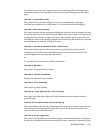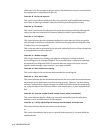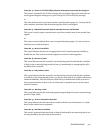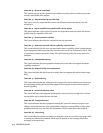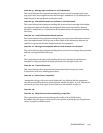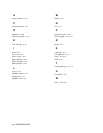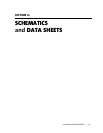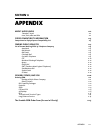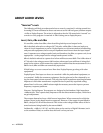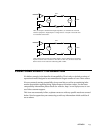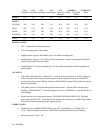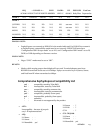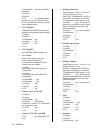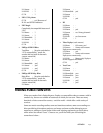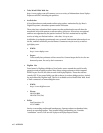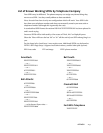11-2 APPENDIX
ABOUT AUDIO LEVELS
“Nominal” Levels
The following will help to understand what we mean by nominal: A mixing console has
its analog VU meter calibrated so that a test tone set to the 0 dB red-green junction outputs
+4 dBu to ZephyrExpress. The mixer is adjusted so that the VU meter looks “normal” on
a music or voice program. A nominal +4 dBu is being sent to ZephyrExpress.
Level, Gain, dBu and dBm
We use dBu, rather than dBm, when describing both input and output levels.
dBu is decibels referred to a voltage of 0.7746 volts; unlike dBm, it does not imply any
value of circuit impedance or power. ZephyrExpress, as with most modern broadcasting
and pro audio equipment, has an output impedance much lower than the input imped-
ance. It operates on a voltage transfer basis and therefore, the dBm, as a power unit, is not
appropriate – as the proper unit for voltage based systems is dBu.
dBm is decibels referred to a power level of one milliwatt across 600Ω. The 0 dBu value of
0.7746 volts is the voltage across a 600Ω resistor when exactly one milliwatt is being dissi-
pated in the resistor, which means that under the condition that the measurement is in a
600Ω circuit, dBu and dBm are numerically equivalent.
Which brings us to our concern here: How does ZephyrExpress get along with other
equipment?
ZephyrExpress’ line input can be set to a nominal +4dBu for professional equipment, or
to a nominal -10dBu for consumer equipment. But the gain can be fine-trimmed by us-
ing the front-panel volume controls. The only time input impedance matching becomes
important is with older transformer-coupled devices or passively-equalized analog
phone lines. In this case, a 680Ω resistor might be necessary across the input to prevent
frequency-response problems.
However, ZephyrExpress’ line outputs are designed to feed modern, high-impedance
+4dBu devices. This is particularly important with the direct RECEIVE outputs, which have
no gain adjustment.
The outputs themselves have a 200Ω source impedance. When connected to a high im-
pedance input, levels should match as expected. However, if the output is terminated in
600Ω, a drop of 2.5 dB will be observed. This is due to the voltage divider effect of the in-
ternal resistance being loaded by the external 600Ω.
Incidentally, +4 dBu is 1.23 VAC, and this value can be read on a Digital Voltmeter (such
as the common Fluke) to confirm that this level is what you have.



